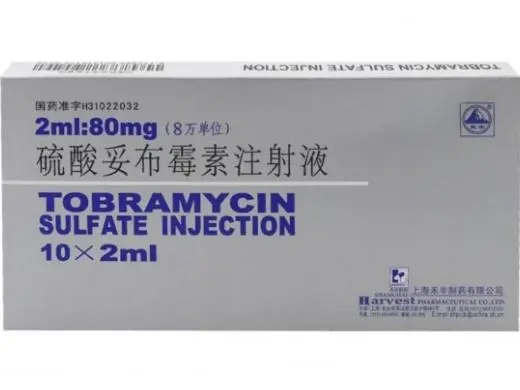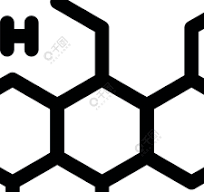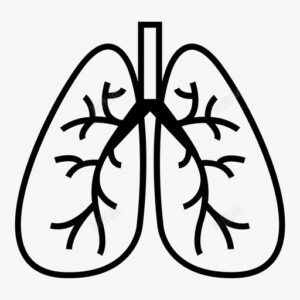Tobramycin Sulfate Injection
Function and indication:
Tobramycin sulfate sodium chloride injection: This product is used for urinary tract infections caused by staphylococci and gram-negative bacteria, such as pyelonephritis, cystitis, epididymitis, pelvic inflammatory disease, prostatitis, etc.; respiratory tract infections, such as pneumonia, acute or chronic bronchitis, etc.; skin, soft tissue, bone and joint infections; abdominal infections; septicemia caused by gram-negative bacteria, especially Pseudomonas aeruginosa; and gram-negative bacteria meningitis and subacute bacterial endocarditis. Ophthalmic preparations are used to treat local infections of the external eye and appendages caused by sensitive bacteria. Tobramycin sulfate injection: This product is suitable for neonatal sepsis, septicemia, central nervous system infection (including meningitis), urogenital system infection, lung infection, biliary tract infection, abdominal infection and peritonitis, bone infection, burns, skin and soft tissue infection, acute and chronic otitis media, sinusitis, etc. caused by Pseudomonas aeruginosa, Proteus, Escherichia coli, Klebsiella, Enterobacter, Serratia, or combined with other antibacterial drugs for staphylococcal infection (methicillin-resistant strains are ineffective). This product can be administered by intrathecal injection when used for Pseudomonas aeruginosa meningitis or ventriculitis; when used for bronchial and pulmonary infections, this product can be inhaled by aerosol as an adjuvant treatment. This product is ineffective for most group D streptococcal infections.
Usage and Dosage:
This product has a variety of dosage forms and specifications. The same drug produced by different manufacturers may have inconsistent instructions. Please read the drug instructions carefully before taking the drug and use it according to the doctor’s instructions. Tobramycin sulfate injection: 1. Intramuscular injection or intravenous drip. 2. Adults: 1-1.7 mg/kg per day, once every 8 hours, for a course of 7-14 days. 3. Children: (1) Premature infants or children aged 0-7 days: 2 mg/kg per day, once every 12-24 hours. (2) Other children: 2 mg/kg per day, once every 8 hours. Tobramycin Sulfate Sodium Chloride Injection: 1. Intravenous drip. During the course of treatment, it is advisable to regularly measure the patient’s blood peak and trough concentrations and adjust the dose accordingly. When treating severe infections, it is advisable to give the first shock dose to ensure that the drug quickly reaches an effective concentration in tissues and body fluids. The dose should be calculated based on standard body weight (removing excess fat). This product can be injected intragastrically or intraperitoneally, with a course of 7-10 days.   2. For patients with normal renal function, the dosage is 2-3 mg/kg per day, divided into 2-4 doses. For patients with severe infections, the dosage is 4-5 mg/kg per day, and the dosage should be reduced to 3 mg/kg per day after clinical symptoms improve. The dosage for infants and children is 3-5 mg/kg per day. For patients with renal dysfunction or the elderly, the first dose should be reduced or the dosing interval should be extended. For intravenous administration, 80 mg of this product can be diluted to 50 or 100 ml with 5% glucose or saline, and then dripped within 20-60 minutes, with an interval of 6-8 hours.
Adverse reactions:
The dosage and usage of this product may vary in different dosage forms and specifications. Please read the specific drug instructions for use, or follow the doctor’s advice. Tobramycin Sulfate Injection/Tobramycin Sulfate Sodium Chloride Injection: Tobramycin Sulfate Injection: 1. Systemic administration combined with intrathecal injection may cause leg twitching, rash, fever and systemic spasm. 2. Those with a higher incidence have hearing loss, tinnitus or fullness in the ears (ototoxicity), hematuria, significantly reduced urination frequency or reduced urine volume, loss of appetite, extreme thirst (nephrotoxicity), unsteady gait, dizziness (ototoxicity, vestibular effects, nephrotoxicity). Those with a lower incidence have difficulty breathing, drowsiness, and extreme weakness (neuromuscular blockade or nephrotoxicity). The incidence of renal dysfunction caused by this product is lower than that of gentamicin. 3. If hearing loss, tinnitus, or fullness in the ears occurs after discontinuation of the drug, pay attention to ototoxicity. Tobramycin Sulfate Sodium Chloride Injection: Adverse reactions are mainly toxic to the eighth cranial nerve and kidneys, and may include hearing loss, dizziness, vertigo, tinnitus, etc., as well as symptoms of kidney damage such as proteinuria, tubular urine, blood urea nitrogen and increased blood creatinine. For details of adverse drug reactions, please refer to the drug instructions.
Contraindications:
The usage and dosage of this product may vary in different dosage forms and specifications. Please read the specific drug instructions for use, or follow the doctor’s advice. Tobramycin Sulfate Injection/Tobramycin Sulfate Sodium Chloride Injection: 1. For this product or other aminoglycosides
Share:
Products
Our offers
Health Classification
Let us work together to protect precious health































